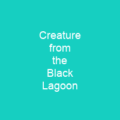Caroline Island is the easternmost of the uninhabited coral atolls which comprise the southern Line Islands in the central Pacific Ocean of Kiribati. It is home to one of the world’s largest populations of the coconut crab and is an important breeding site for seabirds, most notably the sooty tern. The lagoon is a nursery habitat for many fish species including heavily exploited species such as the endangered Napoleon wrasse.
About Caroline Island in brief

According to the path of the International Date Line, Caroline Island is theEasternmost point of land on Earth. Caroline Atoll lies near the southeastern end of the Line Islands, a string of atolls extending across the equator some 1,500 km south of the Hawaiian Islands. The slightly crescent-shaped atoll consists of 39 separate islets surrounding a narrow lagoon, 8. 7 by 1. 2 km2 in size, or with an area of 6. 3 km 2. The total atoll area, including dry land, lagoon and reef flat, measures 13 by 2. 5 km, or 24 km2. The islets rise to a height of only 6 meters above sea level. Caroline’s islets are particularly ephemeral, with several of the smallest islets have been documented to appear or disappear entirely following major storms, while the shapes of larger ones have significantly changed. A 1995 realignment of the international Date Line made Caroline Island one of the first points of land in the world to reach January 1, 2000 on the calendar. The island has remained relatively untouched and is considered one of world’s most pristine tropical islands, despite guano mining, copra harvesting, and human habitation in the 19th and 20th centuries.
You want to know more about Caroline Island?
This page is based on the article Caroline Island published in Wikipedia (as of Dec. 03, 2020) and was automatically summarized using artificial intelligence.







